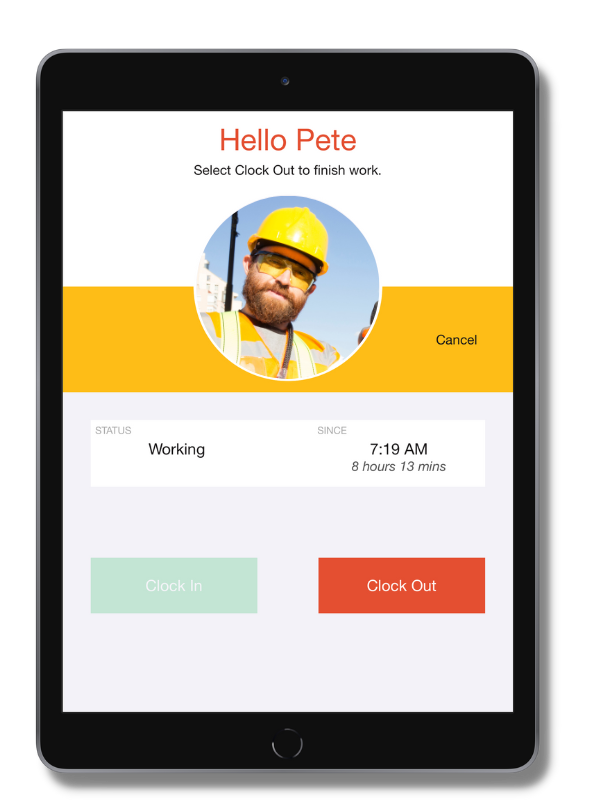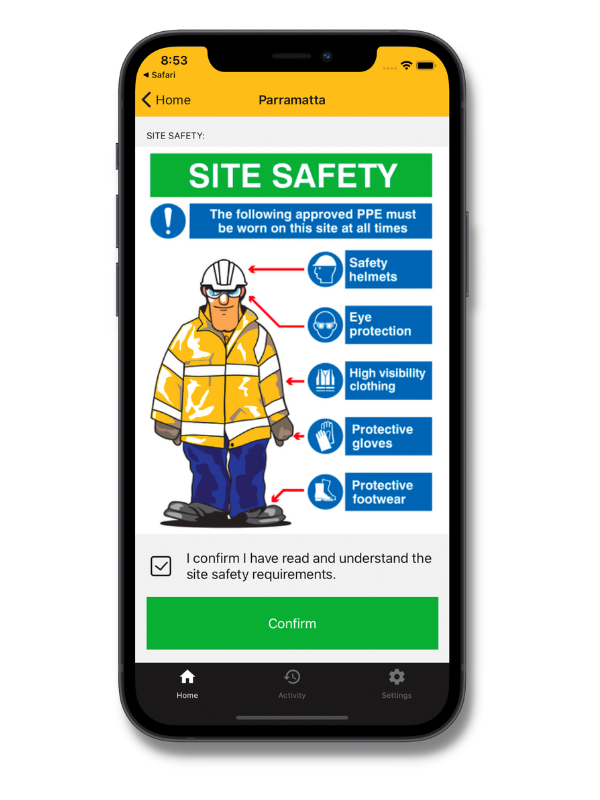Best Time Clock Features for Construction Companies
Overview: Best Construction Time Clock Features
.png)
Construction time clocks are essential tools for construction companies to track and manage their employees' working hours accurately. These clocks record the time when an employee begins and ends their workday, as well as any breaks taken during the shift.
Traditionally, construction companies have used mechanical time clocks, where employees would insert a physical card into the clock to record their arrival and departure times. However, with the advancements in technology, digital time clocks for construction are becoming increasingly popular.
Digital time clocks use biometric authentication, such as fingerprint or facial recognition, to ensure that the employee clocking in is the correct person. These clocks can also be connected directly to existing payroll platforms, allowing for real-time tracking of employee attendance and labor costs.
Some construction companies also use GPS tracking systems to monitor their employees' location and verify their attendance. This technology ensures that workers are physically present on the job site during their shift and can be an effective tool for managing large crews.
Overall, using time clocks can help construction companies streamline their payroll and ensure compliance with labor laws, as well as provide valuable data for estimating labor costs and improving project management.
So then the question becomes: what makes the best time clocks for construction companies?
Explore the features below for some of the top features that are important to construction companies.
Biometric Time Clocks for Construction Companies
Biometric time clocks are time and attendance tracking devices that use biometric technology to verify the identity of employees. Biometric technology uses unique physical characteristics, such as fingerprints, facial features, or iris patterns, to identify individuals. Biometric time clocks capture these physical characteristics and use them to confirm an employee's identity when they clock in or out of work.
There are several types of biometric time clocks, including:
- Fingerprint time clocks: These use a fingerprint scanner to verify an employee's identity. When an employee places their finger on the scanner, the device compares the fingerprint to a pre-existing record in the system to confirm their identity.
- Facial recognition time clocks: As mentioned earlier, these use a camera to capture an image of an employee's face, which is then analyzed and compared to a pre-existing image to confirm their identity.
- Iris recognition time clocks: These use an infrared camera to capture an image of an employee's iris, which is then analyzed and compared to a pre-existing record to confirm their identity.
- Handprint time clocks: These use a handprint scanner to verify an employee's identity. When an employee places their hand on the scanner, the device captures an image of their hand and compares it to a pre-existing record to confirm their identity.

Biometric time clocks offer several advantages over traditional time and attendance tracking methods. They are more secure, as it is difficult for employees to "clock in" for each other, and they are also more convenient, as employees do not need to carry cards or remember codes.
Because of the nature of construction workers - often with gloved hands or working in dusty environments - facial recognition time clocks offer the best kiosk time clock options.
Facial recognition time clocks use a camera to capture an image of an employee's face, analyze it, and then match it with a pre-existing image on file to verify their identity.
The technology behind facial recognition time clocks works by using algorithms to analyze unique facial features, such as the distance between the eyes, the shape of the jawline, and the size and position of the nose, to create a template or "faceprint" for each employee. When an employee approaches the time clock, the camera captures an image of their face, which is compared to the pre-existing faceprint to verify their identity.
Time Clock App with GPS Location Services

Because the work site changes frequently for most construction companies, a mounted kiosk time clock doesn’t always make sense.
When an employee clocks in or out using a time clock with location tracking, the device captures their location using GPS or other location tracking technology, and this information is stored in the system. The employer can then use this data to track employee time and attendance, as well as monitor their location while on the job.
Some time clocks with location tracking also include other features such as geofencing, which allows employers to set up virtual boundaries around job sites or other locations. When an employee enters or exits one of these virtual boundaries, the device automatically records their location and time, providing employers with real-time data about employee whereabouts.
Job & Project Tracking
A fully-featured time clock for construction almost certainly needs to be capable of job and/or project tracking. Construction companies track project work for several reasons, including:
- Budget Management: One of the primary reasons construction companies track project work is to ensure that the project stays within budget. By tracking the time spent on each task, companies can identify where costs are being incurred and adjust their budgets accordingly.
- Resource Planning: Tracking project work also helps construction companies plan and allocate their resources effectively. This includes identifying when to hire additional workers, purchasing materials, and scheduling equipment rentals.
- Quality Control: Construction companies also track project work to ensure that the project is being completed to the required standards. By monitoring the progress of each task, companies can identify potential issues and take corrective action before they become major problems.
- Schedule Management: Another important reason for tracking project work is to manage project timelines. By monitoring the time spent on each task, construction companies can identify potential delays and take action to keep the project on schedule.
- Performance Evaluation: Tracking project work also enables construction companies to evaluate the performance of their workers and subcontractors. By monitoring the time spent on each task, companies can identify which workers are performing well and which may need additional training or supervision.
Offline Operation

Offline operation for a construction time clock refers to the ability of the time clock to function without an internet connection. In other words, even if the time clock is not connected to the internet, it can still record employee clock-ins and clock-outs and store that data locally.
This can be useful in situations where the internet connection is unreliable or unavailable, such as in remote construction sites or areas with poor connectivity. In offline mode, the time clock will store the data locally and automatically synchronize the data with the central database once the internet connection is restored.
Some time clocks are designed to work exclusively in offline mode, while others have both offline and online modes. In either case, offline operation can be a valuable feature for construction companies to ensure accurate and reliable time tracking, even in challenging environments.
Safety & Compliance
When it comes to safety and compliance features for time clocks used by construction companies, the following are some important features to consider:
- Overtime tracking: A time clock that can track overtime hours can help construction companies comply with labor laws regarding overtime pay.
- Fatigue monitoring: Like overtime tracking, fatigue monitoring can alert managers when employees have been working too long. Employees that have been working long shifts have reduced productivity, are more likely to make mistakes, and are subject to an increased risk of workplace injuries, so monitoring and managing these hours can be critical to maintaining safe workplaces.
- Customizable work codes: A time clock that allows for customizable work codes can help construction companies track hours spent on specific tasks, which can be useful for compliance with government contracts and regulations.
- Automated compliance reporting: A time clock that can automatically generate compliance reports can help construction companies ensure they are meeting all required safety and labor regulations. The NoahFace Go mobile app can display policies related to heath, safety, or other work conditions, when employees clock in for work.
- Evacuation and Muster Reporting: In the event of an evacuation, managers can use their mobile phone at the muster point to view the list of employees and visitors that are on site, perform a roll call and tick everyone off one by one, and initiate a phone call to anyone who cannot be located.
By choosing a time clock with these safety and compliance features, construction companies can help ensure that they are meeting all required regulations and keeping their employees safe and secure.
Construction Time Clock Summary
The nature of the workplace for construction companies requires a time clock with specific features and functions, including GPS tracking, facial recognition, and job tracking. While there are many time clocks on the market that offer some of these features, the best construction time clocks will offer all or most of these features.




